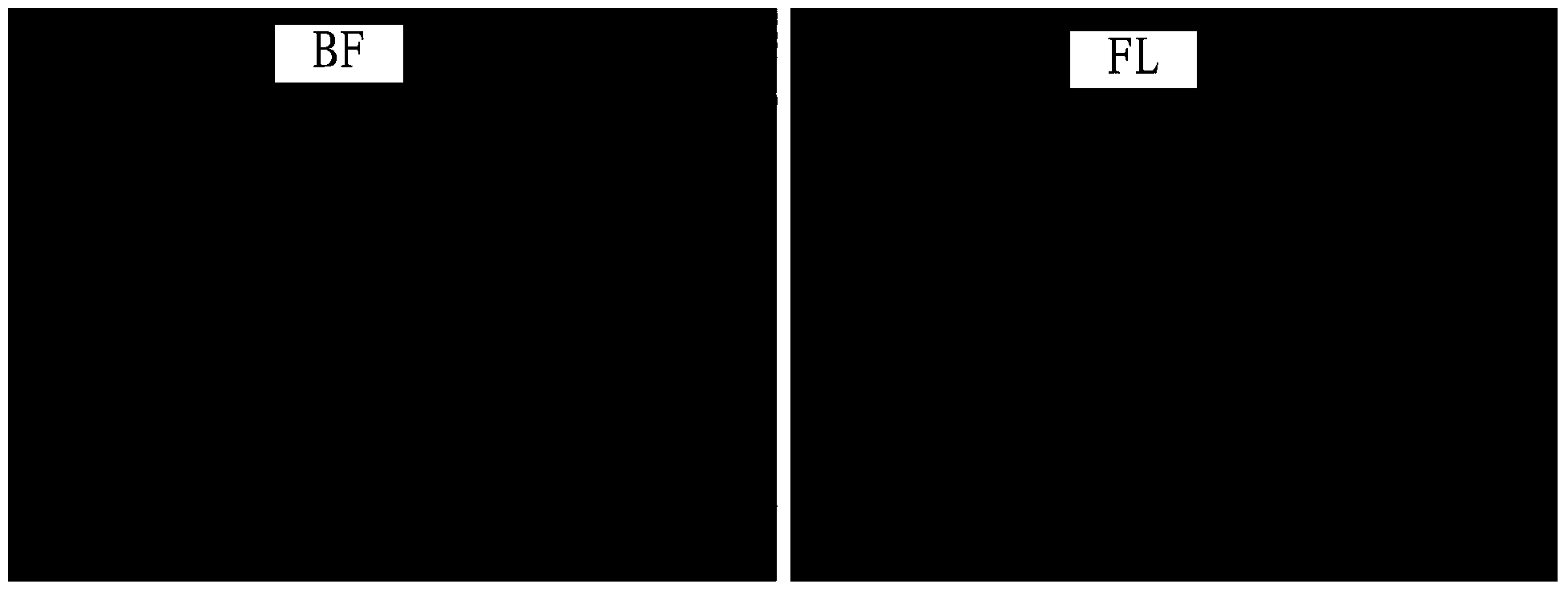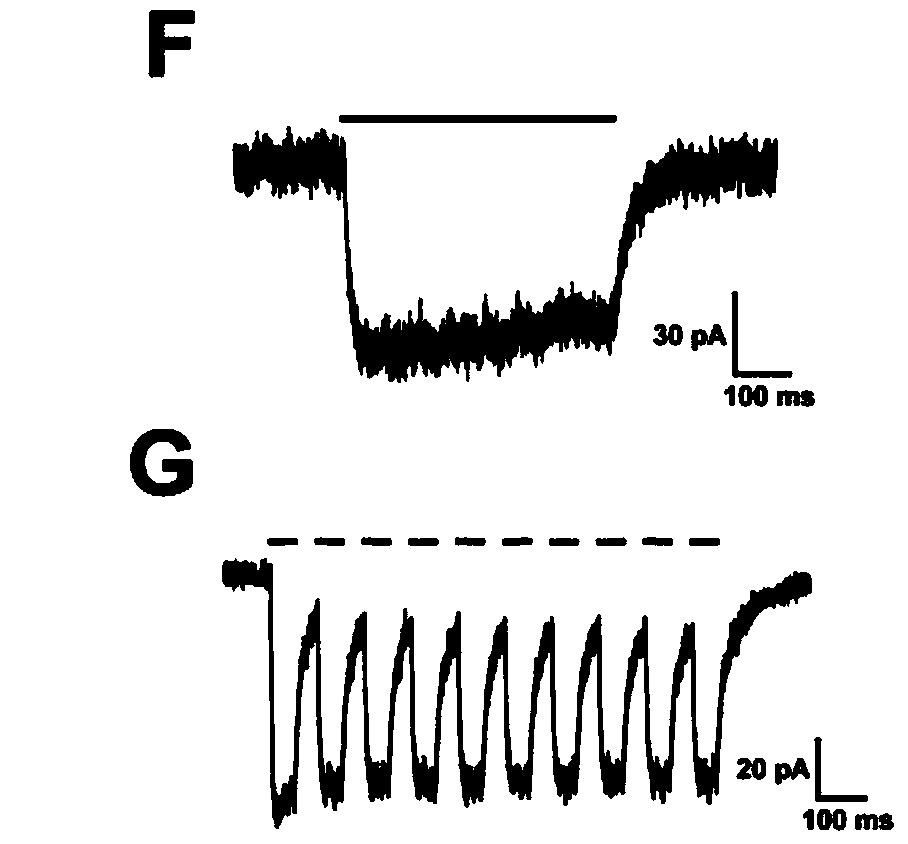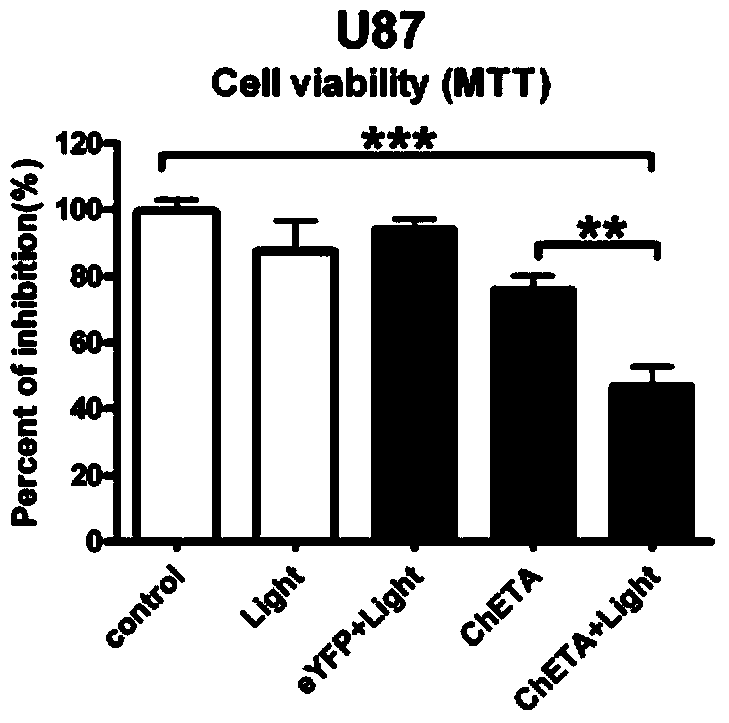Glioma cell line and construction method thereof
A technology for glioma cells and construction methods, applied to cells modified by introducing foreign genetic material, botanical equipment and methods, and methods based on microorganisms, which can solve the problem of stimulants and inhibitors not having tissue specificity and glue Selectivity of tumor cells, side effects, etc.
- Summary
- Abstract
- Description
- Claims
- Application Information
AI Technical Summary
Problems solved by technology
Method used
Image
Examples
Embodiment 1
[0042]Construction of viral vectors and infection of glioma cells.
[0043] The fusion plasmid including sequentially connected ITR, promoter, photosensitive gene, green fluorescent marker gene and ITR, and lentiviral packaging plasmids pCMVΔR8.74, pMD2.G. (1.5 g) were used in liposomes (Invitrogen Corporation Products) were transfected together into 293FT cells (products of ATCC company, the cells need to be replaced with a new batch of cell lines after 25 passages) (6 mg / L liposomes per 200,000 cells), 24 hours later DMEM containing 5mM sodium pyruvate replaced the original culture medium of 293FT cells and continued to culture. After 16 hours, the ultracentrifuge was used to rupture the membrane at a speed of 50,000g, and the suspension was passed through a 20% sucrose filter column to collect the supernatant. The virus titer can reach 3×10 8 Above TU / mL, the produced virus particles were resuspended in sterile phosphate buffered saline at a volume ratio of 1:1000. The ob...
Embodiment 2
[0047] Photocurrent induction and recording.
[0048] In order to verify the functional expression of photogenes in glioma cell lines, we used single-pulse stimulation and multi-pulse stimulation of blue light to record the membrane excitability changes of glioma cells by patch clamp technique. Stimulation can induce current changes in glioma cells; 50ms, 20HZ continuous blue light stimulation can induce corresponding series of membrane current changes. This electrophysiological recording demonstrates the successful expression of light-sensing genes on glioma cell lines.
[0049] The comparison graph of the stimulated current and the inward photocurrent obtained is figure 2 , where, F represents the photocurrent induced by 500ms blue light, G represents the photocurrent induced by 50ms, 20Hz blue light stimulation.
[0050] Depend on figure 2 It can be seen that blue light stimulated glioma cell lines, and single pulse stimulation and continuous light pulse stimulation ca...
Embodiment 3
[0052] Blue light stimulation induces a decrease in the survival rate of glioma cells.
[0053] After the glioma cell line functionally expressed the light-sensing gene, we used blue light to continuously stimulate the glioma cells for 1 h (20 Hz), and analyzed the survival rate of the glioma after 24 h. image 3 .
[0054] Depend on image 3 It can be seen that the survival rate of tumor cells in the light-sensing gene and light combination group (ChETA+light) was significantly lower than that in other groups.
PUM
 Login to View More
Login to View More Abstract
Description
Claims
Application Information
 Login to View More
Login to View More - R&D
- Intellectual Property
- Life Sciences
- Materials
- Tech Scout
- Unparalleled Data Quality
- Higher Quality Content
- 60% Fewer Hallucinations
Browse by: Latest US Patents, China's latest patents, Technical Efficacy Thesaurus, Application Domain, Technology Topic, Popular Technical Reports.
© 2025 PatSnap. All rights reserved.Legal|Privacy policy|Modern Slavery Act Transparency Statement|Sitemap|About US| Contact US: help@patsnap.com



